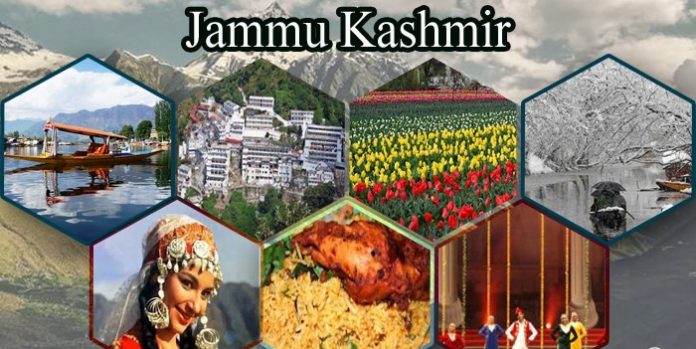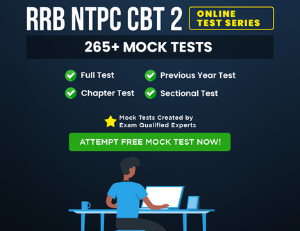So far, we have discussed the Culture, Geographic conditions, Climate, Government policies, and various other interesting facts about the beautiful state of Jammu and Kashmir. Click here if you haven’t read Know your state ‘Jammu and Kashmir’ (Part 1)
Let’s continue with our discussion about the ‘Heaven of India’ i.e. Jammu and Kashmir. Presently, we will study about history, environment and economy of the union territory.
Who was the last ruling emperor of former princely state Jammu and Kashmir? Who was the founder of Srinagar in Jammu and Kashmir?
Let’s talk about the bygone era of Jammu and Kashmir.
HISTORY Jammu and Kashmir GK Notes:
Jammu and Kashmir is the most beautiful, scenic and pristine place on earth, wounded by the fights over its ownership. Jammu & Kashmir has itself deep-rooted in history, culture and religion.
- Jammu and Kashmir was a princely state during the British East India Company rule as well as the British Rule in India from 1846 to 1947.
- The princely state was fabricated after the First Anglo-Sikh War, when the East India Company had arrogated the Kashmir Valley, Jammu, Ladakh, and Gilgit-Baltistan from the Sikhs as war security, then sold the region to the king of Jammu, Gulab Singh.
- At the time of the partition of India and the political unification of India, Hari Singh, the ruler of the state, delayed making a decision about the future of his state.
- On 26 October 1947, Hari Singh endorsed to India in return for the Indian military being airlifted to Kashmir to engage the Pakistan-supported forces, starting the Kashmir conflict.
- According to the history of Jammu & Kashmir, Maharaja Hari Singh was the last ruling Maharaja of the princely state.
- The western and northern districts currently known as Azad Kashmir and Gilgit-Baltistan passed to the control of Pakistan.
- The remaining territory remained under Indian control as the Indian-administered union territories of Jammu and Kashmir and Ladakh.
- The process of standardising Jammu and Kashmir’s status as a state took several years and was completed only in 1957.
- In August 2019 the national government suspended Jammu and Kashmir’s sovereignty and applied India’s constitution fully to the territory and to split the Ladakh region off into a separate union territory of its own.
Let’s talk about the environmental aspects of Jammu and Kashmir.
ENVIRONMENT Jammu and Kashmir GK Notes:
Jammu and Kashmir is known as ‘Heaven on Earth’. Nature over there gives more peace of mind, it makes feel fresh. Jammu and Kashmir is the land of beauty.
- Srinagar is the summer capital of Jammu and Kashmir which is located in the heart of the Kashmir valley spread on both sides of the river Jhelum.
- Jammu and Kashmir has many lakes, rivers, and glaciers. Significant rivers that flow through Jammu & Kashmir from the Himalayas are Jhelum, Chenab, Sutlej, Ravi and Indus.
- There are 27 lakes in Jammu and Kashmir. Some important lakes of Jammu and Kashmir are Dal lake, Nagin lake, Wullar lake, Surinsar lake, Mansar lake, etc.
- Wullar Lake is one of the largest freshwater lakes in Asia. The lake gives about 60% of the fish yield of the region.
- Dal Lake popularly known as the Jewel in the Crown of Kashmir and Srinagar’s Jewel is the most important landmark of Jammu and Kashmir.
- There are 6 dams completed in Jammu and Kashmir namely Alchi Dam &Nimoo Bazgo Plant, Baglihar Dam, Chutak Dam, Dul Hasti Dam, Salal Dam, Uri Dam. While 3 dams are under construction.
- Jammu and Kashmir has a total forest cover of 20230 Sq. km accounting for 19.95% of the total Geographical area.
- There are 3 National Parks, 13 Wildlife Sanctuaries and 29 Conservation Reserves in Jammu and Kashmir.
Let’s discuss about the economy of the union territory.
ECONOMY Jammu and Kashmir GK Notes:
The economy of the union territory is primarily services-based and agro-oriented. The majority of the people of Jammu and Kashmir are engaged in subsistence agriculture of diverse kinds on terraced slopes. Rice, Corn, millet, pulses, cotton, and tobacco are the main summer crops, while wheat and barley are the chief spring crops. The state has limited mineral and fossil fuel resources which are concentrated in the Jammu region. J & K has Asia’s largest tulip garden. J&K’s handicrafts are world-famous and the traditional handicraft industry has emerged as a large industry. The union territory is the leading producer of apples and walnuts.
Education Jammu and Kashmir GK Notes:
Education in the union territory is divided into primary, middle, high secondary, college and university level. Jammu and Kashmir follows the 10+2 pattern for education of children. This is handled by the Jammu and Kashmir State Board of School Education.
Sports:
Football is one of the most popular sports in Jammu and Kashmir. It first came to Jammu and Kashmir in 1891-92 by Tyndale Biscoe. There are 500 clubs in the region. Other popular sports in Jammu and Kashmir include cricket, golf, winter sports, water sports and adventure sports.
Here are interesting facts about Jammu and Kashmir:
- Jammu and Kashmir is the only Indian state where the citizens here have both Indian as well as Kashmir citizenship.
- Srinagar was founded by Emperor Ashoka and not the Mughal emperor Jahangir.
- Kalhana, the first Indian history writer whogave a vivid account of the history of Kashmir before the 10th century AD.
- Amarnath Cave in Jammu and Kashmir has natural Shiv Lingam made of ice which is over 5000 years old and is a prominent Hindu pilgrimage destination. According to a popular legend, Amarnath cave was discovered by a Muslim shepherd, Buta Malik.
- Houseboats first appeared in the 1800s in Dal Lake by Pandit Naraindas to house English visitors.
Therefore, this was all the chief necessitate information about Jammu and Kashmir that will help in your preparation for competitive exams like SSC CGL, CDS, Civil Services and NDA etc. In the next blog, we would be discussing some interesting facts and trivia about the state of Jharkhand. Click here for Know your State – ‘Jharkhand’.
We would also recommend that you should check out our very informative blog on Ladakh. Click here – Know your State ‘Ladakh’.
THANK YOU




